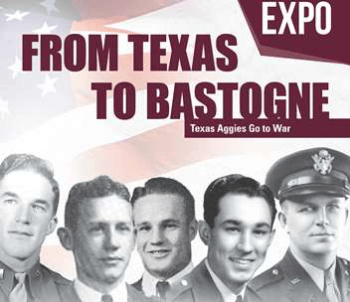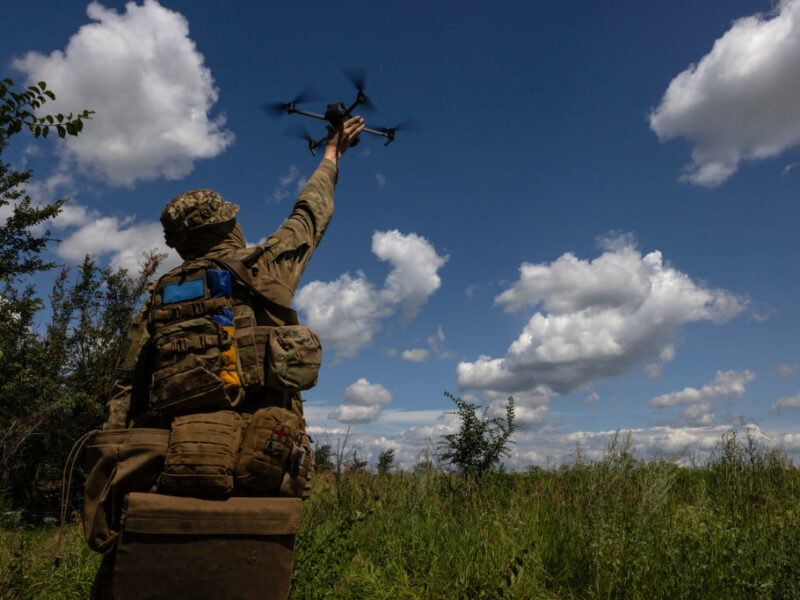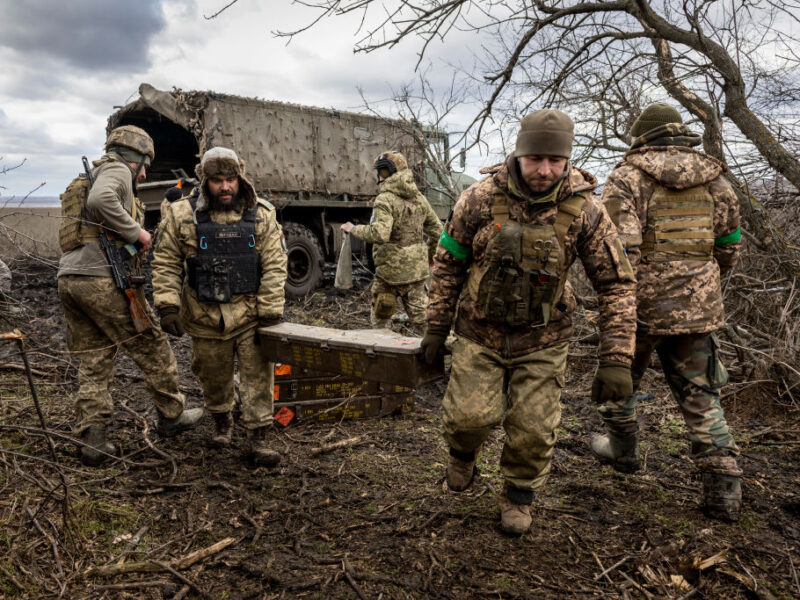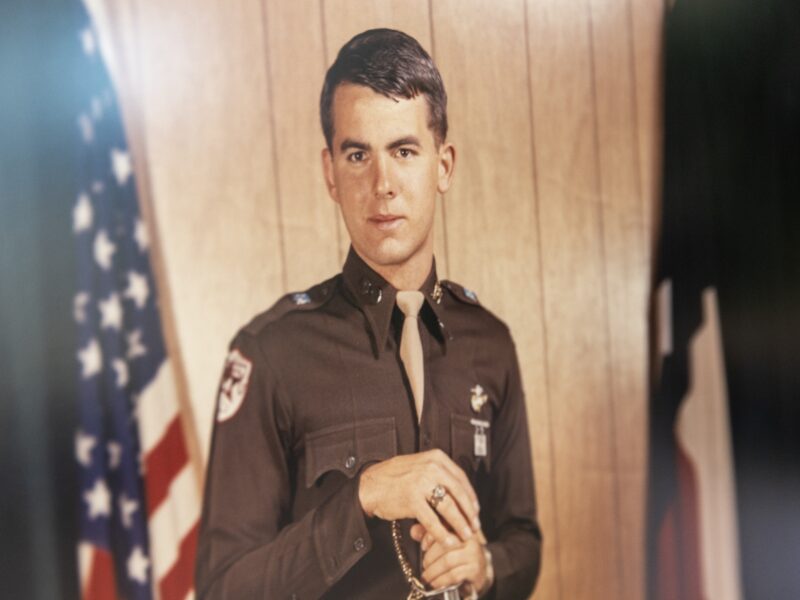Aggies Go To War – James Hollingsworth

Texas Aggies have made significant contributions through the 138 years since the first class graduated. During WWII a total of 20,229 Aggies served in World War II, 14,123 served as officers and 953 died in service. The training these servicemen received not only prepared them to be leaders but continues today to be a light and example to others.
December 12, 2014 will mark the Grand Opening of the Texas Aggies Go to War museum exhibit in Bastogne, Belgium. The museum will highlight the service of five Aggies during WWII. This article recounts the life of James Francis Hollingsworth and is the 3rd in a five part series to honor these servicemen and the sacrifice they made for us all.
“A battle is a real test of a man. I felt that I had met that test in the face of enemy fire on the battlefield, and that maybe I owed something to my country by serving in the army — a responsibility to my country and to be involved in the training of young men.”
-Gen James Hollingsworth ‘40
Early Years
General Hollingsworth is the most decorated general officer in the history of Texas A&M University. His military service spanned nearly four decades, beginning with seven major campaigns from North Africa in 1942 to the fall and occupation of Berlin in 1945. During his career he rose from a Second Lieutenant to a Lieutenant General. He was decorated for heroism many times and wounded five times. His career of service continued after WWII with command positions in South Korea, Vietnam, and the United States. Once he retired from the U.S Army he served as a private consultant to the national defense industry as well as a mentor to cadets at Texas A&M University.
James Hollingsworth was born and raised in a small ranching community seven miles north of Sanger, Texas founded 1886. Sanger was only a few miles south of the Red River and for years served as a rail watering stop for the Santa Fe Railroad (today the BNSF RR). The oldest of four brothers, his parents James N. and Mamie Ella Hollingsworth, owned commercial stores in nearby Dallas and Denton. The Depression Era community of Sanger boasted a flour mill and a regional cotton gin.
James attended Union Hill School, a very small country three room school. From the time he was ten, he worked in the nearby cotton, corn, and wheat fields and also raised cattle. After school and during the summers, he assisted his family by being responsible for 25-30 farm hands. Hollingsworth entered Sanger High School in the 10th grade, walking or riding his horse to class daily. He was very active in the Future Farmers of America (FFA), the agricultural education career leadership organization at his high school, serving as both vice president and president prior to graduation. Active in many sports, he lettered in basketball, track, and football.
The Depression took a tremendous toll on the Sanger community and surrounding area as prices to produce and purchase goods and services were hit hard by the economic downturn. James was encouraged to attend college, however extremely tight family financial resources left very little to allocate towards his education funds. These difficulties did not deter James and only provided him with additional determination and the motivation to secure entrance and payment for college through hard work and dedication.
Hollingsworth entered Texas A&M College in the fall of 1937 after completing his first academicyear, 1935-36, at North Texas Agricultural College. In the fall of 1937 he applied for and received acceptance to Texas A&M College and majored in Dairy Science and Vocational Agriculture. James quickly found employment at the Texas A&M campus dairy that supported the school and the community with milk and cheese products. Given his earlier farm and FFA experience, he was soon promoted to laboratory technician and received a 25 cent pay raise. His average day began at 4 a.m. working at the A&M Dairy, followed by cadet drills, all-day classes, and concluded by returning for a final shift of work at the dairy. As a senior and member of the Corps of Cadets, Headquarters Company, First Infantry Battalion, he served as a cadet captain on the battalion staff.
James graduated in May 1940 with a bachelor’s degree in agriculture and was commissioned as a reserve officer into the U.S. Army. He was employed for a short time at the Hughes Tool Company in Houston, TX prior to being called to active duty in July, 1940.
World War II
Following graduation Hollingsworth entered the army and completed Armor School at Fort Benning, Georgia in the fall of 1940. At Fort Benning he was instrumental in assisting with desert tests to determine if combat tanks preformed best using gasoline or diesel engines. Following the tank test research, he assumed a special intelligence assignment in Belem, Brazil to observe German submarine activity and the potential for spies entering the region. In December 1942 he was transferred to North Africa and joined the 2nd Armored Division which had just landed in Casa Blanca, Morocco. Taking command of a tank company, comprised of three platoons of five tanks each and two tanks assigned to headquarters, he saw his first action against the German Tiger Tanks of the Afrika Korps at the Kasserine Pass.

The next campaign was the landing and invasion of Sicily on July 10, 1943. After an extended battle, the combined Allied Forces won and established a military occupation force and provided assistance for a new government in Sicily. This transition proved a testing ground for the governing and occupation that was later installed in post-war Germany after September 1945. In October 1943, the Army reorganized its key units into “light” units for faster movement and striking ability. In November, the newly reorganized 2nd Division and Hollingsworth boarded military ships for England, arriving on Thanksgiving Day. For the next few months all units and elements of the gathering invasion force entered into extensive training. Lessons learned from North Africa and the Sicily campaigns were integrated into the preparation for the D-Day landing and advance on the Nazi Third Reich.
The 2nd Division was held in reserve and did not land all its units in France until mid-July 1945. Once there, they trained to overcome the hedgerows and joined Operation COBRA on July 26 as the first major break-out in force from the beachhead. Hollingsworth commanded the service and supply trains of Combat Command B which came under heavy attack from the German Luftwaffe, until he reached north of Paris, crossing the Seine, Somme, and Meuse Rivers. By late August they pushed on toward and across Belgium to the Siegfried Line in Germany.
In October 1944 he assumed command of the Second Tank Battalion, 67th Regiment on the Wurm River. His battalion drove through the Siegfried Line and continued north of Aachen toward the Rhine River, where he was wounded yet returned to duty at Puffendorf, Germany on November 18, 1944. In mid-December, Hitler launched his massive offensive against the Western forces through the Ardennes in Belgium and the tip of northern Luxemburg. The German attack caught the Americans off guard and was intended to split the allied lines in order to capture vital supplies at the Port of Antwerp. The already intense fighting escalated with the Battle of the Bulge.
Hollingsworth was wounded twice in Belgium, first at Humane on Dec 26, 1944 and the second time at Samree on January 11, 1945. He was evacuated to Paris and later England for medical care. Anxious to return to his unit, he left the hospital without being released, was recorded AWOL (Absence Without Leave), hitchhiked from Paris to Liege, Belgium to rejoin his unit in the fight. His return was in time to join his unit and prevent the Germans from reaching the Meuse River in Belgium and allowed him to link-up with Patton’s Third Army attacking from the south at Houffalize, Belgium – thus, cutting off the German advance and ending the Battle of the Bulge on January 16, 1945.
The offensive continued toward the Rhine River, with Hollingsworth’s battalion crossing the Rhine near Krefeld on March 24. The unit immediately engaged a German tank training unit, drawing within 75 meters of the enemy to destroy tanks: noting, “All I can remember is that all hell broke loose, as everyone on both sides opened fire.” Following the battle, the battalion proceeded to the Ruhr area, began the race to the Elbe River and beyond to Berlin. The fighting remained at close quarters. On one occasion Hollingsworth lined up thirty-four (34) tanks and gave a rarely used command in modern warfare, “CHARGE!” Overwhelmed by the onslaught, the Germans broke and ran, abandoning all their weapons and equipment.
After clearing and capturing a number of small towns, his battalion reached Schoenebeck and Bad Salzelmen overlooking the Elbe River. The objective was to move into Schoenebeck and if possible seize the bridge across the river before the Germans could destroy it. In the heat of battle, he exited his tank and led the primary tank through the debris to cut off the retreating Germans. Weaving through burning Panzer tanks and constant enemy fire, his unit made it to the stone wall in front of the bridge. In the process he received wounds to his face, cutting his lip and forehead, and as he continued advancing he sustained a gunshot wound to the knee. Before additional military support could be brought up to assist in the fight, the Germans destroyed the bridge. Though bloodied and unable to walk, he remained in the action until ordered to be evacuated for treatment. For his actions at the bridge at Schoenebeck, Colonel Hollingsworth received his first Distinguished Service Cross (DSC) for heroism.
The 2nd Armored Division was halted at the Elbe River due to General Eisenhower’s order to hold the ground and not advance. Following a mopping-up operation, the division was relieved of occupation duties in early-May and ordered to be part of the advance party staging for the final push into Berlin. All hostilities came to a halt on Victory in Europe Day (V-E Day) May 8, 1945. At war’s end, Hollingsworth had risen from lieutenant to colonel, and commanded units from a platoon to regiment. In addition to being awarded the DSC, he received four Silver Stars, five Purple Hearts, and four Bronze Stars. In September 1945 he was assigned as Commandant of the Cavalry School at Fort Riley, Kansas.
After four years at Fort Riley, Hollingsworth returned to Germany as chief of operations branch to the 7th Army Headquarters followed by a tour of duty at West Point. In 1956 he was Chief of the Military Assistance Advisory Group (MAAG) in Pakistan for two years. He returned to Fort Hood, Texas where he was promoted to brigadier general and was eventually assigned to the First Army Division in Vietnam. He earned his second DCS in November 1966 for guiding close air support for three surrounded Special Forces units from his helicopter, flying repeatedly low level maneuvers over
Cong forces and taking heavy fire under attack. After 15 months in the field, he returned to The Pentagon, and in 1971 once again returned to Vietnam to handle a number of special combat related problems at the direct orders from General C. Abrams. Once his mission was complete, he became commander of the Third Regional Assistance Command, comprising of 11 provinces surrounding Saigon, the capital of South Vietnam. In that position he commanded allied forces in one of the major battles at An Loc in April 1972.

Ordered to hold the region at all cost, he was in the air daily to ensure there were no surprise attacks. Facing the most experienced North Vietnamese hard core regular troops he modified his defensive strategy. In a tactical effort, he utilized B-52 heavy bombers based in Guam and fighter planes from aircraft carriers in the nearby Gulf of Tonkin to provide close air support of his defenders and prevented the capture of Saigon. It was only after the enemy was pushed back and he was wounded in the eye by rocket fire that he ultimately turned over command.
Hollingsworth was medically evacuated to Walter Reed Hospital in Washington, D.C. to undergo surgery to save the eye. While in recovery with a black patch over his eye he was visited by Army Chief of Staff, General Abrams, where upon Hollingsworth expressed his concern that if his eye did not recover he would be forced to retire from the Army. Abrams expressed little concern telling Holly, “He would rather have him with one eye than most people with three.” The eye healed, he received his third Bronze star and was sent to South Korea in command of the I Corps Group, a force of over 250,000 soldiers. Once on site he revamped the defensive strategy of the ROK, improved morale, intensified training, and was able to reclaim thousands of waste acres in the DMZ for South Korean farmers, who called him, Ho Lim Soo, “the dignified tiger in the forest.” He return to Washington D. C., to assist with the development of strategic plans for Central Europe and NATO due to looming Soviet threat. He retired from the Army on August 25, 1976, after over 36 years of service.
General Hollingsworth’s military decorations included:
United States of America
- Distinguished Service Cross (2 OLC)
- Distinguished Service Medal (3 OLC)
- Silver Star (3 OLC)
- Legion of Merit (2 OLC)
- Distinguished Flying Cross (2 OLC)
- Soldier’s Medal
- Bronze Star Medal (Valor device and 3 OLC)
- Air Medal (Valor device and 37 OLC)
- Army Commendation Medal
- Purple Heart (5 OLC)
- Distinguished Unit Citation
- Meritorious Unit Commendation Medal (1 OLC)
Belgium
- Fourragere and Croix de Guerre
Republic of Vietnam
- National Order of Vietnam (Third, Fourth and Fifth Class)
- Distinguished Service Order First Class
- Cross of Gallantry with Five palms
- Chung My Medal First Class
First Republic of Korea
- Order of National Security Tong-II
- Order of Merit Chung Mu
The “Texas Aggies Go to War” exhibition opens December 12, 2014 in the Van Geluwe building in downtown Bastogne, Belgium. If you have interest in learning more about the exhibit, attending the grand opening, or donating to this exhibit, please visit the website. http://texasaggiesgotowarexhibit.tamus.edu
The relationship with GSK pharmaceuticals is the most impactful relationship to date as a result of A&Ms collaborations with the Belgians. See more about this collaborative effort at the following link: Texas A&M dedicates national pandemic influenza vaccine manufacturing facility, on track for 2016 start-up phase.





